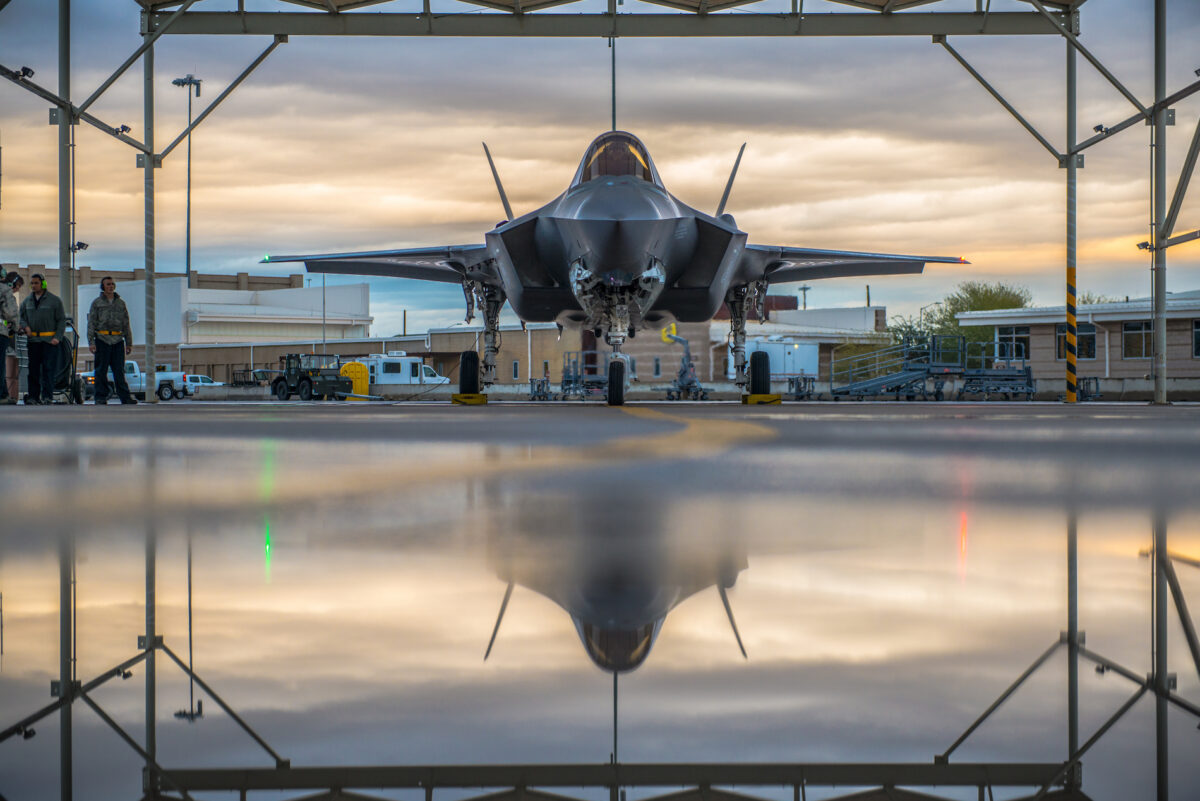


Australia’s new F-35 fighter jets may be technologically out of date when they arrive in Australia in December after the Pentagon’s decision to delay the approval of the plane’s new weapons system.
Known as the TR-3, the system allows the new Joint Strike Fighters (JSF) to run a software platform called Block 4 that provides a range of new weapon capabilities for the JSF, like enhanced electronic attack weapons and the ability to carry additional missiles.
TR-3’s development has been embroiled in delays, with the F-35 Lightening II Joint Program Office (JPO), which is in charge of the plane’s ongoing development, recently disclosing to the Breaking Defense news website that the U.S. military would not accept any aircraft until ongoing testing for the system is completed.
A spokesperson for Lockheed Martin told The Epoch Times that the company would deliver the fighter jets with its previous computational system, the TR-2, although they remain committed to providing TR-3 for the F-35 fleet as early as possible.
“Lockheed Martin is fully dedicated to delivering TR-3 F-35 aircraft and will continue to work with the Joint Program Office on software development while maintaining the highest levels of safety and quality,” a spokesperson for Lockheed Martin Australia said in an email.
“We continue to deliver aircraft in the TR-2 configuration as planned.
The JSF has had issues with its software platforms previously, with the TR-2 having problems with the aircraft’s open-air tests, including the aim-120 missile trial, which was delayed until a software update in 2021, the U.S. Military’s Office of the Director, Operational Test and Evaluation, said in a report.
The Lockheed Martin spokesperson also said that it was too early to predict future delays in the delivery of the system.
“It is too early to predict any future delivery adjustments. We remain committed to providing TR-3 for the F-35 fleet as early as possible.”
The Epoch Times has reached out to Australia’s Defence Department and the Shadow Defence Minister Andrew Hastie to ask about the delay and its impacts on Australia’s capabilities but has not received a comment from either party.
The comments from Lockheed’s spokesperson meanwhile come after the company’s head of international business, Steve Over, said in March that the manufacturer was on track to deliver Australia’s order of 72 F-35 Lightning II fighters by the end of 2023, reported Flight Global.
This is aligned with the Australian Defence Force’s own operational own timeline (pdf).
According to the company, this will make Australia the second-largest operator of the fifth-generation jet, following the U.S.
The delay in the delivery of the systems comes after the JPO told the U.S. Congress in March that they believed there was a “risk of TR-3 delivery slipping until the December 2023-April 2024 timeframe.”
“Starting later this summer, F-35 aircraft coming off the production line with TR-3 hardware will not be accepted (DD250) until relevant combat capability is validated in accordance with our users’ expectations. The JPO and Lockheed Martin will ensure these aircraft are safely and securely stored,” JPO spokesman Russ Goemaere told Breaking Defense on June 12.
The decision to mothball the planes comes after the jet’s production was suspended for three months following a crash during testing in December 2022 at Fort Worth in Texas, where a pilot was practising vertical landings and takeoffs.
The pilot was forced to eject from the plane, with the U.S. military saying the jet suffered from a very rare form of harmonic resonance.
On Jan. 5 Pentagon Press Secretary Brigadier General Pat Ryder said that the JPO office has agreed with the planes’ engine manufacturers Pratt and Whitney to delay the scheduled delivery and acceptance of F-135 engines until further information from the investigation is known and the safety of flight can be assured.
“In the meantime, our F-35s that are in the operational fleet continue to operate.”


